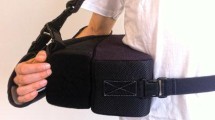Abstract
Evaluation of upper extremity function after reconstructive surgery is increasingly important both to predict outcome and for the control of cost-effectiveness. Three validated, self-administered shoulder questionnaires were applied prospectively in 23 otherwise healthy patients with rotator cuff deficiency and correlated to the Constant-Murley Shoulder Score and a visual analogue scale for satisfaction. Seven women and 16 men with combined tears of supraspinatus and infraspinatus (mean age 55.3 ± 10.5 years, r/l: 14/9, follow-up 57.8 ± 15.7 weeks) were gathered prospectively and evaluated pre- and postoperatively with the American Shoulder and Elbow Surgeons (ASES) Shoulder Index, the Simple Shoulder Test (SST) and the Disabilities of the Arm, Shoulder and Hand Module (DASH questionnaire). Additionally, a visual analogue scale for satisfaction was employed. All four scores and the visual analogue scale revealed improvement at a statistically significant level (P < 0.01) after surgery. All questionnaires showed a significant correlation with the Constant-Murley Shoulder Score (ASES: r = 0.871, P < 0.01; DASH: r = –0.758, P < 0.01, SST: r = 0.494, P < 0.05, Pearson’s correlation coefficient). Taken together, all questionnaires were easy to apply, and reliable evaluation of shoulder function was possible with significant correlation to the Constant-Murley Shoulder Score postoperatively. The SST was easy to apply, and compound outcome analysis was possible with the ASES Shoulder Index and DASH questionnaire. The DASH scale was the most complex evaluation instrument. The Constant-Murley Shoulder Score comprises a physical examination, which is advantageous but restricts the application to the office. For postoperative assessment without the patient having to return to the clinic, the ASES Shoulder Index is preferred because of its good correlation to the Constant-Murley Shoulder Score (r = 0.871) and the visual analogue scale for satisfaction (r = 0.762).
Similar content being viewed by others
Author information
Authors and Affiliations
Additional information
Received: 4 October 1999
Rights and permissions
About this article
Cite this article
Skutek, M., Fremerey, R., Zeichen, J. et al. Outcome analysis following open rotator cuff repair. Early effectiveness validated using four different shoulder assessment scales. Arch Orth Traum Surg 120, 432–436 (2000). https://doi.org/10.1007/s004020000133
Issue Date:
DOI: https://doi.org/10.1007/s004020000133




